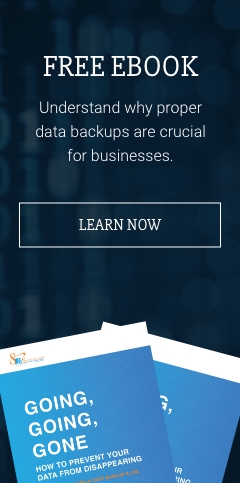From improved productivity to heightened employee morale, there’s no denying the many benefits that mobile technology and cloud computing add to the workplace. Unfortunately, portability and accessibility can also create enormous information security issues.
Cybersecurity has become one of the toughest small-business challenges because the rise of mobile and cloud technology has greatly increased the opportunities for attacks. Today’s businesses need to worry about protecting their in-house networks as well as data stored in the cloud and on portable devices, including those owned by employees.
A strong cybersecurity strategy should make it easy to manage the security of your employees’ devices and accounts, regardless of where they’re located. Here’s how it works:
What every BYOD policy should include
A bring-your-own-device (BYOD) policy stipulates the rules and regulations that employees must agree to if they want to use their own devices for work. More companies are implementing BYOD protocols so that staff can use their own devices for work because it creates new opportunities to save money and boost productivity.
Most employees are used to working with the gadgets they own, making them more efficient at completing tasks. This is good news for companies that want to save money, as they don't have to purchase company handheld devices. To make a BYOD campaign successful, you need to have a tight grasp on information security and employee privacy.
For example, employees usually need to sign an agreement to enroll in the program. Agreements typically involve surrendering a degree of control and administration over personal devices, while also clarifying privacy protections. Given that some people won’t enroll in your BYOD policy, you might have to provide your own devices.
An agreement should at least include a clause stipulating that data stored on a device may be remotely wiped if administrators believe it has been compromised. The agreement should also require multifactor authentication, encryption, and the separation of all work-related apps and data from personal content on the device.
Training your employees and enforcing your policies
Just like a non-disclosure agreement or any other information-security policy, BYOD policies are nothing more than documents outlining the legal obligations of two or more parties. Unless they are enforced and empowered by an adequate level of security awareness training, they’re just signatures on a piece of paper. Your employees need to understand what they’re agreeing to — after all, not everyone knows what multifactor authentication and data encryption are.
Given that most data breaches and other cyberattacks are caused by human error, regular security awareness training sessions are crucial for safeguarding information-bearing systems. Employees need to know why they should password-protect their smartphones and why they must keep all sensitive data encrypted while in storage and in transit.
In a BYOD office, security is everyone’s responsibility and you must make it clear that it’s not just about your business — it’s also about their own safety. You’ll be doing your employees a favor by educating them on the risks of using mobile devices.
Finally, it’s important to use the right technological and administrative measures to lock down privileged mobile devices and maintain full visibility into all corporate data no matter where it resides. The best way to achieve this is with a cloud-hosted mobile device management (MDM) solution, which gives you centralized access and control over all the devices in your fleet.
Safebit Solutions helps organizations in Houston, Baytown, and Conroe with their digital transformation journeys via technology expertise and solutions they can depend on. Get in touch today to bid farewell to your IT concerns.


